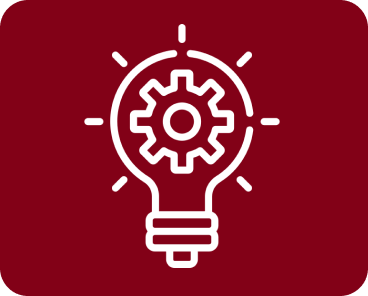Scrum Master Training
SCRUM MASTER TRAINING
Training Summary
This Scrum Master training program is designed to equip participants with the knowledge and skills to effectively facilitate Scrum teams and ensure the successful implementation of Scrum. The course will cover a range of topics, including:

Scrum Framework
Understanding the Scrum framework, roles, artifacts, and ceremonies.

Scrum Roles and Responsibilities
Understanding the roles of Product Owner, Scrum Master, and Development Team.

Scrum Events
Facilitating Scrum events such as Sprint Planning, Daily Scrum, Sprint Review, and Sprint Retrospective.

Product Backlog Management
Managing and prioritizing the product backlog.

Sprint Planning and Execution
Planning and executing Sprints effectively.

Impediment Removal
Identifying and removing impediments that hinder the team's progress.

Coaching and Mentoring
Coaching and mentoring team members to improve their skills and performance.
Training Objectives
Upon completion of this training, participants will be able to:

Facilitate Scrum Events
Facilitate Scrum events effectively.

Coach and Mentor Teams
Coach and mentor team members to improve their performance.

Remove Impediments
Identify and remove impediments that hinder the team's progress.

Measure and Improve
Use metrics to measure team performance and identify areas for improvement.

Ensure Team Alignment
Ensure the team is aligned with the product vision and goals.

Foster a Collaborative Environment
Create a positive and collaborative team environment

Manage the Product Backlog
Manage and prioritize the product backlog.
The program will cover
By combining Agile Project Management and Scrum Master training, participants will gain a comprehensive understanding of Agile principles and practices, enabling them to lead and manage successful Agile projects.
Project Management Fundamentals
- What is a Project
- What is Project Management
- Project Management Office (PMO)
- Project Life Cycle
- Roles of a Project Manager
- Key Terminologies in Project Management
- Introduction to Project Management
- Essential Roles of Project Managers
- Basic Project Management Tools
- Project Management Methodologies
- Project Management Estimation (Duration, Cost, Resources)
- Project Management Principles (Stewardship, Team, Stakeholder, Value, Systems Thinking, Leadership, Tailoring, Quality, Complexity, Risk, Adaptability and Resilience, Change)


Foundations of Project Management
- The Project Initiation Phase
- What is the Initiation Phase About? Define the Project Goals
- What is Involved in a Business Case?
- Business Case Development (Components and Importance)
- What is Project 'Scope'?
- Who Performs the Feasibility Study and What Does it Involve?
- What Goes into Risk Assessment? What Are Expectations?
- How to Create a Project Charter? (Purpose and Components)
- Building WBS (Work Breakdown Structure)
- Creating a Project Management Schedule
- Project Management Documentation
- Extensive Agile Project Management
Project Management Skills & Communication
- The Project Planning Phase
- What is Planning? Is it Important?
- Why is Planning So Critical in Project Management?
- What is the Cost of Change in the Project?
- What to Do Before You Start?
- Project Management Insights
- Scope Planning
- How to Estimate When Planning?
- Leadership and Communication Techniques
- Team Building and Leadership
- Risk Assessment and Monitoring
- Communication and Stakeholder Engagement


Project Management Planning, Cost, Expectations, Change, and Risk
- The Planning Phase - Budgeting
- The Process of Budgeting
- RACI Matrix - Assigning Roles
- Planning - Budgeting, R&R, Quality
- Budgeting and Finances in Project Management
- Conflict Resolution and Fostering Team Collaboration
- The Planning Phase - Expectation, Change, and Risk
Foundations of Agile and Scrum
- Agile Project Fundamentals
- Agile vs. Traditional PM
- Overview of Agile Principles and Values
- Inverting the Triangle
- Agile Manifesto
- Agile Manifesto Values
- Scope Planning
- Agile vs Waterfall - Comparison and Analysis
- Scrum Framework Essentials
- What is Scrum
- Scrum Activities
- Understanding the Scrum Framework
- Scrum Roles: Scrum Master, Product Owner, Development Team
- Scrum Events: Sprint Planning, Daily Stand-ups, Sprint Reviews, Retrospectives
- Scrum Artifacts: Product Backlog, User Backlog, User Stories, Epics, Sprint Backlog, Increment


The Project Execution, Monitoring, and Closure Phase
- The Project Execution Phase
- Introduction to Execution and Kick-off Meetings
- What is Involved in a Kick-off Meeting
- Tips to Handle Meetings
- What is Action-Owner Due Date
- Filling in the Project Diary
- How the Project Manager Manages Tasks and Team
- The Project Monitoring and Closure Phase
Advanced Scrum and Agile Practices - Jira and Confluence
- Introduction to Jira and Confluence
- Overview and Usage
- Creating and Managing Backlogs (Techniques and Best Practices)
- Writing Effective User Stories (Tips and Templates)
- Estimating Work (Techniques like Story Points and Planning Poker)
- Scrum Boards in Jira
- Reports in Jira and the Burndown Chart
- The Product Backlog in Jira (Also Known as the Backlog or the Jira Backlog)
- Roadmapping in Jira


Agile Metrics and Reporting
- Key Performance Metrics
- Velocity, Burnup, and Burndown Charts
- Using Metrics for Improvement (Techniques for Continuous Improvement)
- Effective Reporting to Stakeholders (Methods and Best Practices)
- Analyzing Data (Driving Decisions and Improvements)
- Case Study: Continuous Improvement in Agile Projects (Scenario and Activities)
Scrum Master Skills and Responsibilities
- Servant Leadership and Team Facilitation (Principles and Application)
- Coaching and Mentoring Agile Teams (Techniques and Best Practices)
- Identifying and Removing Impediments (Strategies for Success)
- Conflict Resolution and Team Collaboration (Techniques for Fostering Collaboration)
- Case Study: Servant Leadership in Agile Teams (Scenario and Activities)


Agile Leadership and Team Dynamics
- Principles of Agile Leadership (Building and Leading Teams)
- Managing Distributed and Remote Teams (Techniques and Best Practices)
- Creating and Sustaining an Agile Culture (Strategies for Success)
- Case Study: Leading a Distributed Agile Team (Scenario and Activities)
